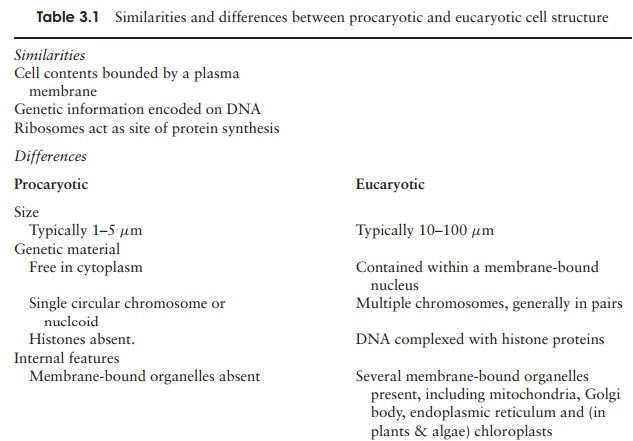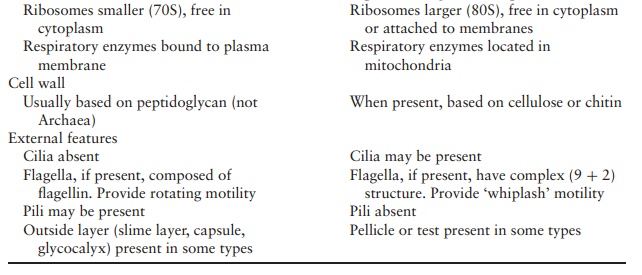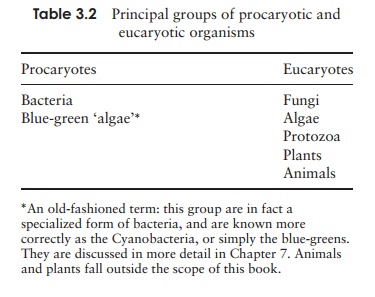Chapter: Essential Microbiology: Cell Structure and Organisation
Cell Structure and Organisation
Cell Structure and Organization
The basic unit of all living things is the cell. The cell theory is one of the fundamental
concepts of biology; it states that:
·
all organisms are made up of cells, and that
·
all cells derive from other, pre-existing cells.
As we see, there may exist within a cell many smaller, subcellular
structures, each with its own characteristics and function, but these are not
capable of independent life.
An organism may comprise just a single cell (unicellular), a collection of cells that are not morphologically or
functionally differentiated (colonial),
or several dis-tinct cell types with specialised functions (multicellular). Among microorganisms,
allbacteria and protozoans are unicellular; fungi
may be unicellular or multicellular, while algae may exist in all three forms.
There is, however, one way that organisms can be differentiated from each other
that is even more fundamental than whether they are uni- or multicellular. It
is a difference that is greater than that between a lion and a mushroom or
between an earthworm and an oak tree, and it exists at the level of the
individual cell. All or-ganisms are made up of one or other (definitely not
both!) of two very distinct cell types, which we call prokaryoticand eucaryotic
cells, both of which exist in the microbial world. These differ from each other
in many ways, including size, structural complexity and organisation of genetic
material (Table 3.1).


The most fundamental difference between procaryotic
and eucaryotic cells is reflected in their names; eucaryotic cells possess a
true nucleus, and several other distinct subcellular organelles that are
bounded by a membrane. Procaryotes have no such organelles. Most of these
differences only became apparent after the development of electron mi-croscopy
techniques.
As can be seen from Table 3.2, the procaryotes
comprise the simpler and more prim-itive types of microorganisms; they are
generally single celled, and arose much earlier in evolutionary history than
the eucaryotes. Indeed, it

is widely accepted that eucaryotic cells actually
arose from their more primitive counterparts. Note that the viruses do not
appear in Table 3.2, because they do not have a cellular structure at all, and
are not therefore considered to be living organisms..
The use of DNA sequencing methods to determine phylogenetic relationships between
organisms has re-vealed that within the procaryotes there is another
fun-damental division. One group of bacteria were shown to differ greatly from
all the others; we now call these the Archaea,
to differentiate them from the true
Bacteria.

These two groups, together with the eucaryotes, are
thought to have evolved from a common ancestor, and represent the three domains of life (Figure 3.1). The
Archaea comprise a wide range of mostly anaerobic bac-teria, including many of
those that inhabit extreme en-vironments such as hot springs. In this book we
shall largely confine our discussions to the Bacteria.
Related Topics